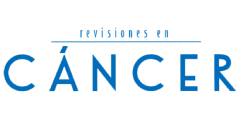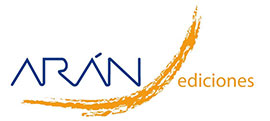Majem M, de las Peñas R, Virizuela JA, Cabezón-Gutiérrez L, Cruz P, Lopez-Castro R, et al. SEOM clinical guideline emesis (2021). Clin Transl Oncol 2022;24(4):712-23.
Yates BJ, Catanzaro MF, Miller DJ, McCall AA. Integration of Vestibular and Emetic Gastrointestinal Signals thatProduce Nausea and Vomiting: Potential Contributions to MotionSickness. Exp Brain Res 2014;232(8):2455.
Crowder SL, Hoogland AI, Welniak TL, LaFranchise EA, Carpenter KM, Li D, et al. Metagenomics and chemotherapy- induced nausea: A roadmap for future research. Cancer 2022;128(3):461-70.
Wickham RJ. Revisiting the physiology of nausea and vomiting — challenging the paradigm [Internet]. Support Care Cancer 2020;28(1):13-21.
Wickham RJ. Nausea and Vomiting: a Palliative Care Imperative. Curr Oncol Rep 2020;22(1):1.
Dranitsaris G, Molassiotis A, Clemons M, Roeland E, Schwartzberg L, Dielenseger P, et al. The development of a prediction tool to identify cancer patients at high risk for chemotherapyinduced nausea and vomiting. Ann Oncol 2017;28(6):1260-7.
Toniolo J, Delaide V, Beloni P. Effectiveness of Inhaled Aromatherapy on Chemotherapy-Induced Nausea and Vomiting: A Systematic Review. J Altern Complement Med 2021;27(12):1058-69.
Molassiotis A, Aapro M, Dicato M, Gascon P, Novoa SA, Isambert N, et al. Evaluation of Risk Factors Predicting Chemotherapy- Related Nausea and Vomiting: Results From a European Prospective Observational Study. J Pain Symptom Manage 2014;47(5):839-848.e4.
Roila F, Molassiotis A, Herrstedt J, Aapro M, Gralla RJ, Bruera E, et al. 2016 MASCC and ESMO guideline update for the prevention of chemotherapy- and radiotherapy-induced nausea and vomiting and of nausea and vomiting in advanced cancer patients. Ann Oncol Off J Eur Soc Med Oncol 2016;27(Suppl 5):v119-33.
Warr D. Bringing it all together in the treatment of CINV: application of current knowledge into routine clinical practice. Support Care Cancer 2018;26:29-33.
Grunberg S. Patient-Centered Management of Chemotherapy- Induced Nausea and Vomiting. Cancer Control 2012;19(2 Suppl):10-5.
Vidall C, Dielenseger P, Farrell C, Lennan E, Muxagata P, Fernández-Ortega P, et al. Evidence-based management of chemotherapy-induced nausea and vomiting: A position statement from a European cancer nursing forum. Ecancermedicalscience 2011;5(1):211.
Vidall C, Fernández-Ortega P, Cortinovis D, Jahn P, Amlani B, Scotté F. Impact and management of chemotherapy/radiotherapy- induced nausea and vomiting and the perceptual gap between oncologists/oncology nurses and patients: a cross-sectional multinational survey. Support Care Cancer 2015;23(11):3297-305.
Young A, Dielenseger P, Ortega PF, Perez DF, Jones P, Lennan E, et al. Helping patients discuss CINV management: Development of a Patient Charter. Ecancermedicalscience 2013;7:296.
Fernández-Ortega P, Caloto MT, Nocea G, SFrancisco J, Gómez J, Zabaleta P, Llombart-Cussac A. Chemotherapy-induced nausea and vomiting in clinical practice: impact on patients’ quality of life. Support Care Cancer 2012;20:3141-8.
Boelig RC, Barton SJ, Saccone G, Kelly AJ, Edwards SJ, Berghella V. Interventions for treating hyperemesis gravidarum: a Cochrane systematic review and meta-analysis. J Matern Fetal Neonatal Med 2018;31(18):2492-505.
Aapro M. CINV: still troubling patients after all these years. Support Care Cancer 2018;26:5-9.
Kiernan J. Genetic Influence on Chemotherapy-Induced Nausea and Vomiting: A Narrative Review. Oncol Nurs Forum 2016;43(3):389-93.
Roila F, Molassiotis A, Herrstedt J, Aapro M, Gralla RJ, Bruera E, et al. 2016 MASCC and ESMO guideline update for the prevention of chemotherapy- and radiotherapy-induced nausea and vomiting and of nausea and vomiting in advanced cancer patients. Ann Oncol 2016;27:v119-33.
Razvi Y, Chan S, McFarlane T, McKenzie E, Zaki P, DeAngelis C, et al. ASCO, NCCN, MASCC/ESMO: a comparison of antiemetic guidelines for the treatment of chemotherapy-induced nausea and vomiting in adult patients. Support Care Cancer 2019;27(1):87-95.
Hesketh PJ, Kris MG, Basch E, Bohlke K, Barbour SY, Clark- Snow RA, et al. Antiemetics: American Society of Clinical Oncology clinical practice guideline update. J Clin Oncol 2017;35(28):3240-61.
Effective interventions for CINV: NCCN Antiemesis Clinical Practice Guidelines in Oncology. ONS News 2004;19(9 Suppl): 17-8.
Berger MJ, Ettinger DS, Aston J, Barbour S, Bergsbaken J, Bierman PJ, et al. NCCN Guidelines Insights: Antiemesis, Version 2.2017. J Natl Compr Canc Netw 2017;15(7):883-93.
Holmqvist A, Lindahl G, Mikivier R, Uppungunduri S. Age as a potential predictor of acute side effects during chemoradiotherapy in primary cervical cancer patients. BMC Cancer 2022;22(1):371.
Dodd M, Janson S, Facione N, Faucett J, Froelicher ES, Humphreys J, et al. Advancing the science of symptom management. J Adv Nurs 2001;33(5):668-76.
Miaskowski C. Symptom clusters: establishing the link between clinical practice and symptom management research. Support Care Cancer 2006;14(8):792-4.
Barsevick AM. The concept of symptom cluster. Semin Oncol Nurs 2007;23(2):89-98.
Dodd MJ, Cho MH, Cooper BA, Miaskowski C. The effect of symptom clusters on functional status and quality of life in women with breast cancer. Eur J Oncol Nurs 2010;14(2):101-10. 29. Olver IN, Eliott JA, Koczwara B. A qualitative study investigating chemotherapy-induced nausea as a symptom cluster. Support Care Cancer 2014;22(10):2749-56.
Vanbockstael J, Coquan E, Gouerant S, Allouache D, Faveyrial A, Noal S, et al. How to improve the prevention of chemotherapy- induced nausea and vomiting? The French NAVI study. Support Care Cancer 2016;24(3):1131-8.
Escobar Álvarez Y, De Castro Carpeño J, Bell D, Drago A, Franceschetti A. Prevention of chemotherapy-induced nausea and vomiting in the real-world setting in Spain. Clin Transl Oncol 2021;23(10):2155-62.
Hesketh PJ, Kris MG, Grunberg SM, Beck T, Hainsworth JD, Harker G, et al. Proposal for classifying the acute emetogenicity of cancer chemotherapy. J Clin Oncol 1997;15(1):103-9.
Mayor S. Side-effects of cancer drugs are under-reported in trials. Lancet Oncol 2015;16(3):e107.
Di Maio M, Gallo C, Leighl NB, Piccirillo MC, Daniele G, Nuzzo F, et al. Symptomatic toxicities experienced during anticancer treatment: agreement between patient and physician reporting in three randomized trials. J Clin Oncol 2015; 33(8):910-5.
Mayor S. Doctors less likely than patients to report toxicity of cancer treatments, study shows. BMJ 2015;350:h485.
Ryan A, Noonan B. Exploring Nurses’ Understanding of Anticipatory Nausea and Vomiting in Patients With Cancer. Oncol Nurs Forum 2019;46(6):738-45.
Knobf MT, Musanti R, Dorward J. Exercise and quality of life outcomes in patients with cancer. Semin Oncol Nurs 2007;23:285-96.
Devlin EJ, Whitford HS, Peoples AR, Morrow GR, Katragadda S, Giguere JK, et al. Psychological predictors of chemotherapy-induced nausea in women with breast cancer: Expectancies and perceived susceptibility. Eur J Cancer Care (Engl) 2021;30(6):e13488.
Chan A, Kim HK, Hsieh RK, Yu S, de Lima Lopes G, Su WC, et al. Incidence and predictors of anticipatory nausea and vomiting in Asia Pacific clinical practice — a longitudinal analysis. Support Care Cancer 2015;23(1):283-91.
Wei TT, Tian X, Zhang FY, Qiang WM, Bai AL. Music interventions for chemotherapy-induced nausea and vomiting: a systematic review and meta-analysis. Support Care Cancer 2020;28(9):4031-41.
Kothari T, Jakhar S, Bothra D, Sharma N, Kumar H, Baradia M. Prospective randomized trial of standard antiemetic therapy with yoga versus standard antiemetic therapy alone for highly emetogenic chemotherapy-induced nausea and vomiting in South Asian population. J Cancer Res Ther 2019;15(5):1120-3.
Stan DL, Collins NM, Olsen MM, Croghan I, Pruthi S. The evolution of mindfulness-based physical interventions in breast cancer survivors. Evid Based Complement Alternat Med 2012;2012:758641.
Hunter JJ, Maunder RG, Sui D, Esplen MJ, Chaoul A, Fisch MJ, et al. A randomized trial of nurse-administered behavioral interventions to manage anticipatory nausea and vomiting in chemotherapy. Cancer Med 2020;9(5):1733-40.
Chen L, Wu X, Chen X, Zhou C. Efficacy of Auricular Acupressure in Prevention and Treatment of Chemotherapy-Induced Nausea and Vomiting in Patients with Cancer: A Systematic Review and Meta-Analysis. Evid Based Complement Alternat Med 2021;2021:8868720.
Miao J, Liu X, Wu C, Kong H, Xie W, Liu K. Effects of acupressure on chemotherapy-induced nausea and vomiting-a systematic review with meta-analyses and trial sequential analysis of randomized controlled trials. Int J Nurs Stud 2017;70:27-37.
Hu J, Shen Y, Zhang G, He J, Sun M, Zhang H, et al. Effect of acupoint therapies on chemotherapy-induced nausea and vomiting: A systematic review protocol. Med (United States) 2019;98(37): e17109.
 Número de descargas:
63706
Número de descargas:
63706
 Número de visitas:
2076
Número de visitas:
2076
 Citas:
0
Citas:
0


